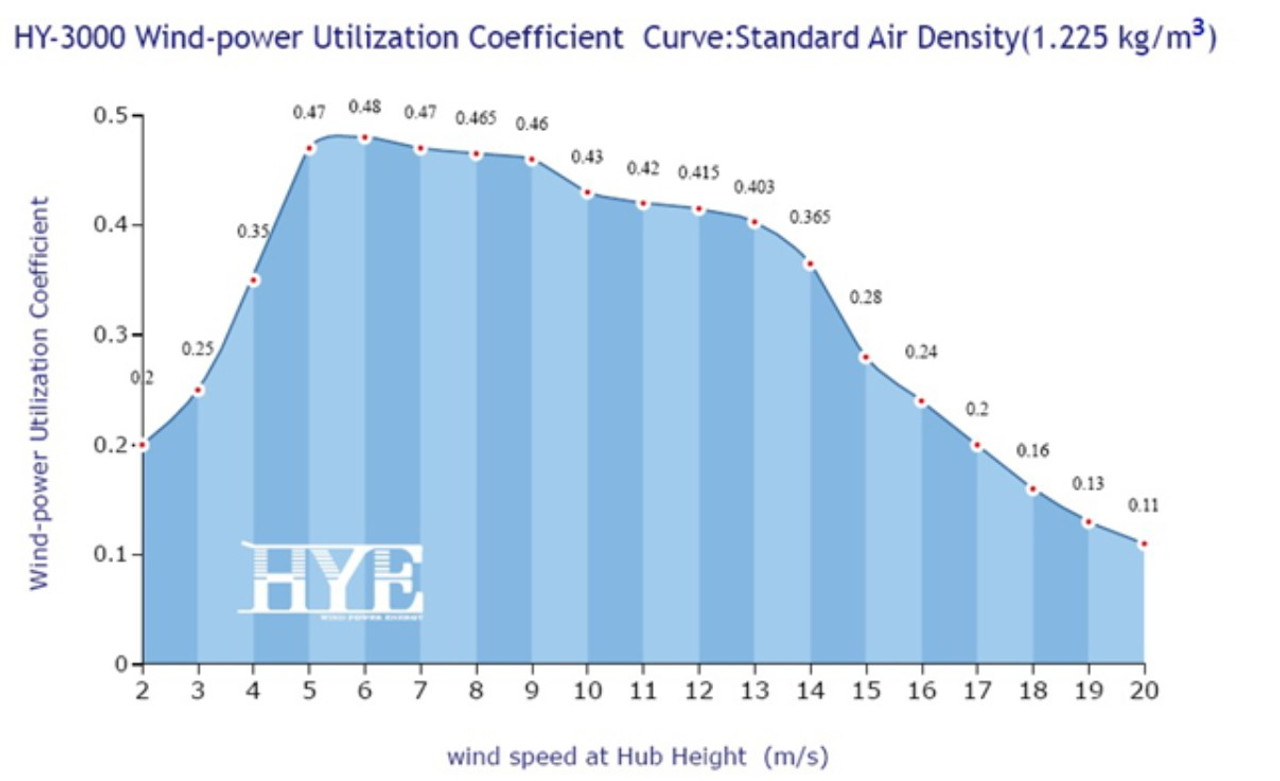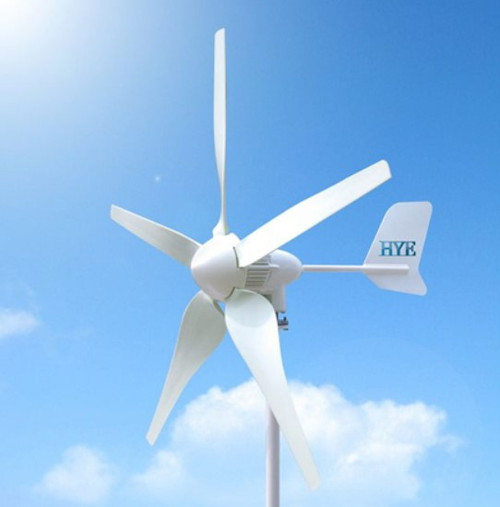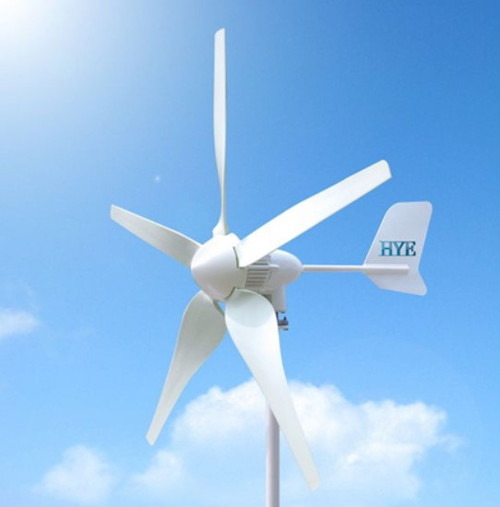Product Description
Hurricane HYE HY-3000L/110V 3000W 110V Wind Turbine Kit , 5 Blade with Flange Connection
Hurricane Wind Power Exclusive US Distributor for HYE HYEnergy Wind Turbine Kits
Wind Turbine Features:
- 5 blade designed for low wind area, light breeze start up
- Amazingly quiet operation with minimal vibration
- Electromagnetic braking and blade aerodynamic braking
- High efficiency achieved by perfect match on the generator and blades
- Extreme weather resistance
- Extreme wind resistance
- Anti-rust & anti-corrosion
- Light weight, easy installation
- Long lifetime, maintenance-free
Technical Specification:
- Model: HY-3000L/110V
- Rated Output: 3000W
- Peak Output: 3500W
- Rated Voltage: DC110V
- Start-up Wind Speed: 4.5mph
- Cut-in Wind Speed: 5.6mph
- Rated Wind speed: 26.8mph
- Working Temp. range: from -40°F to 140°F
- Survival Max. wind: 50m/s or 110mph
- Over Speed Control: Electromagnetic & blade aerodynamic braking
- Number of Blades: 5
- Rotor Diameter: 3m
- Swept Area: 7.07㎡
- Blade Material: Nylon fiberglass reinforced composite
- Generator Type: Brushless 3-phase PMA with high performance Neodymium Magnets
- Tower-top Weight: 155lbs
- Tower Type Required: self-supporting, guyed, tilt-up tower or rooftop mounting etc. (Not Included)
- Applications: solar & wind hybrid power system, off-grid power system etc.
- Product Life: 15 years
- Warranty: 3 years
- Years on Market: 5 years
- Certificate: CE, RoHS, ETL, ISO9001:2008, ISO14001
- Measurement: 78*32*14in
- Gross Weight: 110lbs
Wind Turbine Design Structure:

























